
Are Baby Puffs Unhealthy?
What's the Problem With Rice Puffs?
Rice puffs, it seems, are everywhere. I see them tucked into diaper bags, stashed in the underneath storage compartments of strollers, proffered like candy during sticky situations (*the airport), and of course, lining the shelves of grocery stores. They seem so innocuous -- and soeasy!I fed my kids rice puffs all the time when they were of the age, and never really thought twice about it (nor am I losing sleep about it now, BTW). But-- if I were facing the choice today, I would definitely opt for something different.
There’s three reasons for this:
- To minimize toxic heavy metal exposure -- rice puffs contain high levels of inorganic arsenic;
- To minimize experience with highly processed foods -- rice puffs are highly processed; and,
- There are better alternatives out there.
Let’s move along in order…
Rice puffs contain (problematic) elevated levels of inorganic arsenic.
We’ve written recently about some of the details and lessons from the Healthy Babies Bright Futures study on toxic heavy metals in baby food, including the fact thatrice and fruit juice appear to be the main culprits, consistently measuring highest for levels of toxic metals.
At the very top of the list? Rice-based foods and food products.
This should catch our attention, because rice-based baby foods and toddler snacks, especially rice puffs, are so widespread. In fact, experts note that rice products stand out as problematic not only because they contain high levels of arsenic, but also because babies and young children tend to eat more rice-based foods.
It’s no secret that these exposures can have negative effects, especially over time, and especially among children, who are at greater risk from lesser exposures because 1) they are smaller and 2) their brains are still developing. It’s clear that arsenic builds up in their bodies: infants who consume more rice-based products measure higher levels of urinary arsenic. And repeated arsenic exposure impacts children’s neurodevelopment and potentially their IQ. According to experts, “there is no established safe level of inorganic arsenic consumption for babies.”
Now, this statement^ doesn’t necessarily tell us that thereisn’t some acceptable minimal level of exposure (arsenic exists naturally in the soil, air, and water, and some of it inevitably leaches into rice plants, so it’s impossible to avoid exposure entirely) -- just that we can’t see what it is. In part, that may be because many of the food products babies and toddlers are eating contain levels that far exceed any externally-set max levels:
There are no current limits set for arsenic in baby foods (though, prior to 2011 it was 2.1 micrograms per kg/body weight), but Consumer Reports set maximum levels for inorganic arsenic at 3 parts per billion (ppb); the Food and Drug Administration set them (for bottled water) at 10 ppb; the Environmental Protection Agency did the same, and so did the European Union and the World Health Organization.
And yet the baby foods tested in the Healthy Babies report regularly measured arsenic at levels exceeding 100 ppb. To give just one example, inorganic arsenic levels in Nurture puffs in assorted flavors varied from 100 to 180 ppb.
And it’s not just puffs -- it’s also teethers, rusks, multigrain bars… Plus, many mindful parents specifically choose brown rice products because we know that brown rice is more healthful (it’s a whole grain), without knowing that brown rice actually contains more arsenic than white rice.
The medical community has expressed concern with young children’s rice consumption for some time now. The American Academy of Pediatrics has been recommending that parents cut back on babies’ rice consumption for nearly five years -- evenbefore the 2019 Healthy Babies report and the Congressional one to follow. Rice intake among babies is worrying, the organization said in 2016, because infants consume approximately three times the amount of rice adults do in relation to weight. “In fact,” reports the University of Rochester, “people eat the most rice (relative to their weight) at approximately 8 months of age, a prime time for brain development.”
When it comes to heavy metal exposure, we know that the foods children eat more of and more often pose a greater potential risk. And rice puffs -- along with various other rice-based snacks -- are ubiquitous. According to parent reports, 25% of babies 6-12 months old eat puffs every single day.
Our intent here isn’t to scare you (or to judge!) -- if your baby or toddler has eaten a lot of rice or rice-based foods, don’t panic, and don’t think you’re alone. Our point is simply that the clear health concern lies with consistent, repeated exposure over time (because this is what could potentially lead to build-up in a child’s body) -- and that interrupting a pattern can make a big difference.
The Healthy Babies report noted:the simple act of swapping out rice puffs for a rice-free snack can lead to 93% less toxic heavy metal exposure. Passing on rice-based teething biscuits and rusks can lessen toxic heavy metal exposure by 91%, and choosing multi-grain infant cereals (such as oatmeal) rather than infant rice cereal can cut exposure by 84%.
(PS -- if you want to sign, there’s a parent petition asking the FDA to step in and regulate baby foods more aggressively.)
Rice puffs (and other rice-based toddler snacks) are a heavily processed food.
You may have heard that processed foods are…a problem in this country. Our heavily-processed Western diets contribute to a myriad of mental and physical health problems at every age. As much as nutrition scienceseems to change, nutritionists and health professionals have known for a long time that choosing whole, unprocessed foods over processed products wherever you are able can influence your overall health and wellbeing for the better (and by a lot).
These beneficial effects start right away; indeed, we’re increasingly coming to understand that the flavor preferences and eating habits established in infancy and early childhood can last for life, so working where we can to offer our babies and toddlers unprocessed foods and snacks can truly be significant.
Sometimes, it can be hard to tell whether, or to what extent, a food is “processed” -- but Michael Pollan’s simple ingredient list checks make for an easy screening. Take a look at a product’s ingredient list and ask yourself: Does it contain more than five ingredients? Does it contain any ingredients you can’t pronounce? If so, don’t eat it.(Don’t try to do this with baby formula, though!)
Here’s a representative ingredient list for rice puffs:
Ingredients:ORGANIC BROWN RICE FLOUR, ORGANIC WHITE RICE FLOUR, ORGANIC APPLE JUICE CONCENTRATE, CONTAINS 2% OR LESS OF THE FOLLOWING: ORGANIC PURPLE CARROT POWDER, ORGANIC BLUEBERRY POWDER, MIXED TOCOPHEROLS (TO PRESERVE FRESHNESS), VITAMINS AND MINERALS: DICALCIUM PHOSPHATE, CHOLINE BITARTRATE CHOLINE), POTASSIUM CHLORIDE, CALCIUM CARBONATE, SODIUM ASCORBATE (VITAMIN A TRICALCIUM PHOSPHATE, FERRIC PYROPHOSPHATE ALPHA-TOCOPHERYL ACETATE (VITAMIN E), VITAMIN A ACETATE, CHOLECALCIFEROL (VITAMIN D3), CALCIUM D-PANTOTHENATE (PANTOTHENIC ACID VITAMIN B5), ZINC NDE, NIACINAMIDE (VITAMIN B3), THIAMINE MONONITRATE (VITAMIN B1), RIBOFLAVIN (VITAMIN B2), PYRIDOXINE HYDROCHLORIDE (VITAMIN B6), CYANOCOBALAMIN VITAMIN B12).
OK, so that’s a fail.
Of course, this is just one example, but many well-known brands (even organic ones) also include coloring additives, cane syrup, or cane sugar.
This isn’t to say you can never, ever choose puffs. But it is to say that we (I, at least) often relied on them for their seeming innocence and ease, when in reality they are not completely harmless, or even “neutral.”
There are better alternatives to rice puffs.
A final reason to think about cutting back on puffs is simply that there are other, better stand-ins available.
Numerous fresh options can work really well for on-the-go snacks if you don’t necessarily need to store them for longer periods (and don’t live in the hot and humid South, where fresh foods start to sweat the second you step outside, hah), such as cheese, blueberries, peas, or tofu (cut appropriately in terms of size). Shoot, you could even use cut pieces of whole grain bread or pasta.
If you need something that can last longer without refrigeration, many companies are now producing yogurt melts as an alternative toddler snack option -- which is great… except that most of them contain added sugar (and also don’t pass the how-processed-is-this-food ingredient list test).
Here are the ingredient lists for two widely available toddler yogurt melts:
- CULTURED REDUCED FAT MILK, SUGAR, STRAWBERRY PUREE, NONFAT DRY MILK, TAPIOCA STARCH, LESS THAN 1.5% OF: GELATIN, NATURAL STRAWBERRY FLAVOR, LACTIC ACID ESTERS OF MONO AND DIGLYCERIDES, FRUIT AND VEGETABLE JUICE COLORS, VITAMIN C (SODIUM ASCORBATE), VITAMIN E (ALPHA TOCOPHERYL ACETATE), VITAMIN A ACETATE.
- Organic Cultured Grade A Milk, Organic Skim Milk, Organic Sugar, Organic Tapioca Starch, Organic Blackberry Puree, <2% Of: Organic Mixed Berry Flavor (Organic Strawberry, Blueberry, Raspberry And Cherry Flavors, Organic Sugar, Organic Lemon Juice Concentrate), Organic Blueberry Puree, Organic Strawberry Puree, Organic Whey Protein Concentrate, Pectin, Organic Inulin, Organic Beet Juice Concentrate (For Color), Mixed Tocopherols (To Preserve Freshness), S. Thermophilus, L. Bulgaricus, L. Johnsonii, B. Lactis, L. Paracasei, L. Rhamnosus. Contains: Milk.
Notice anything else? SUGAR is the second ingredient. (Sigh.)
*All of this is why we at Amara are so committed to developing baby foods and toddler snacks thataren’t highly processed andnever contain added sugars.
Here’s the ingredient list for Amara’s Carrot Raspberry toddler yogurt melts: Organic apple, organic coconut milk, organic carrots, organic raspberries.
Okay, well that works! Interested in more on-the-go alternatives? Check out our post on favorite Healthy Snacks for Toddlers.

At the end of the day…
Don’t lose sleep over rice puffs (not worth it!). No one is suggesting you burn all the rice and/or rice puffs in your pantry. But the old adage “everything in moderation” applies here -- rice puffs and other rice-based baby foods and snacks are high in inorganic arsenic and tend to be heavily-processed foods... So cutting them out where you can seems like a reasonable goal.
There’s a time and a place for everything, but over-relying on easy “foods” like rice puffs isn’t ideal (just as over-relying on “food” pouches isn’t ideal, either).
Instead, try to opt for homemade alternatives when it’s possible, and know that all of Amara’s yogurt melts are a fantastic (and delicious) stand-in for all those times when you need something simple, easy, and healthy.
Additional sources not linked --
https://www.politico.com/news/agenda/2021/02/28/fda-toxic-metals-food-471757
https://theconversation.com/how-safe-is-your-baby-food-155443
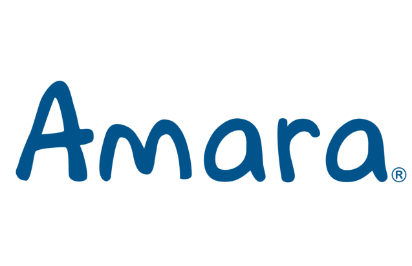
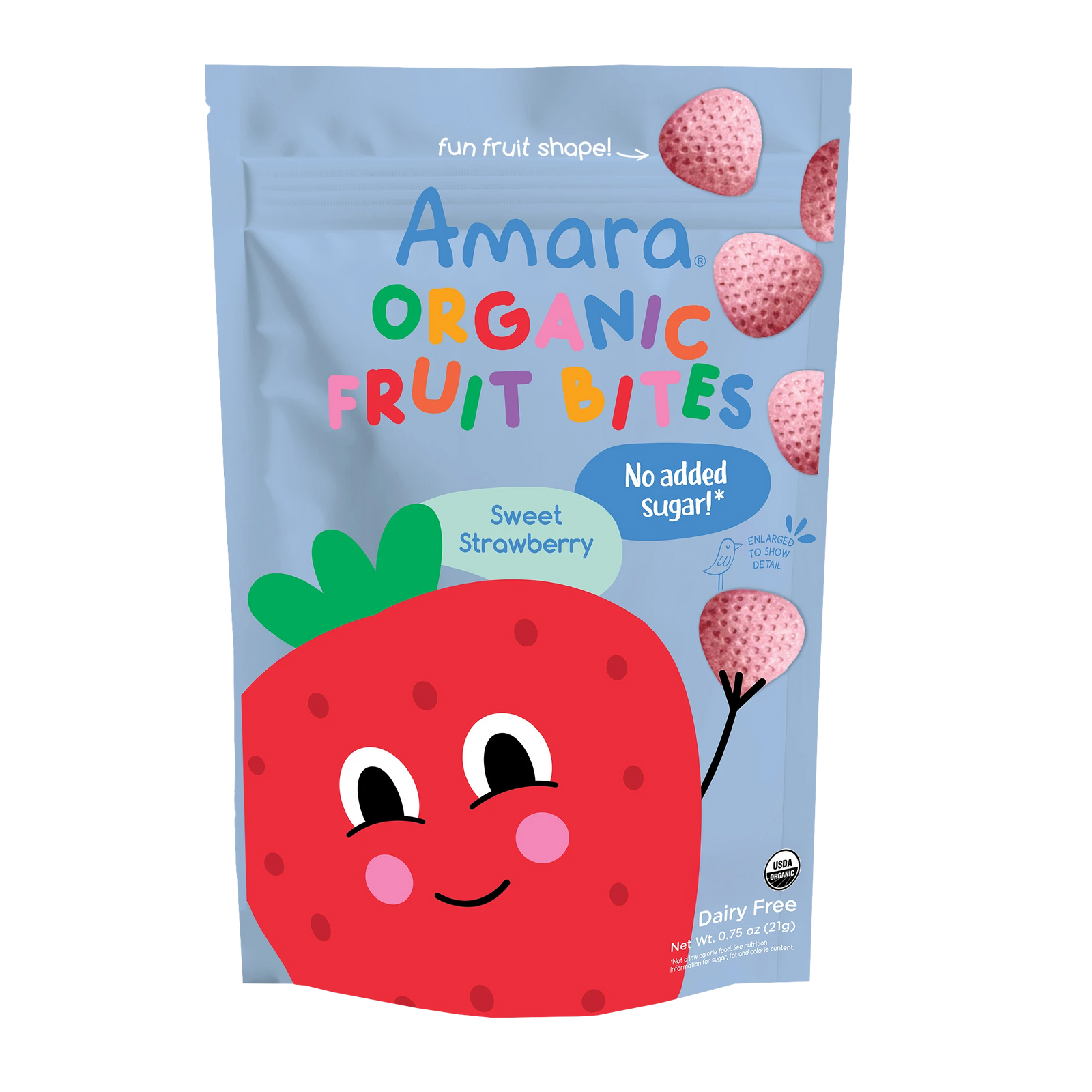



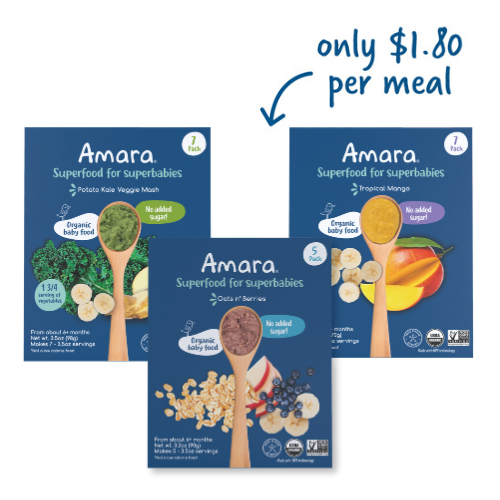
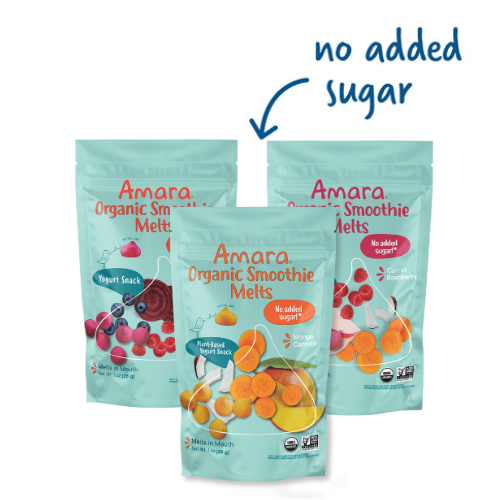
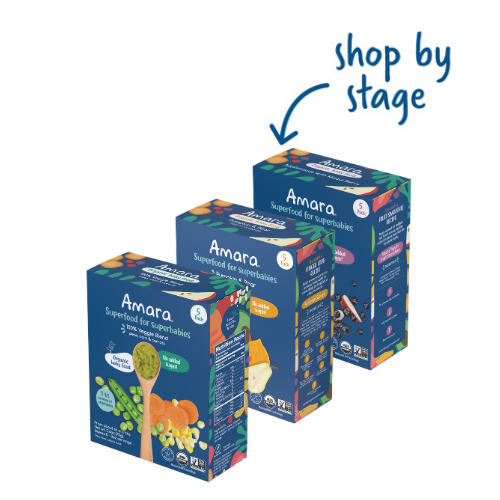
Leave A Comment